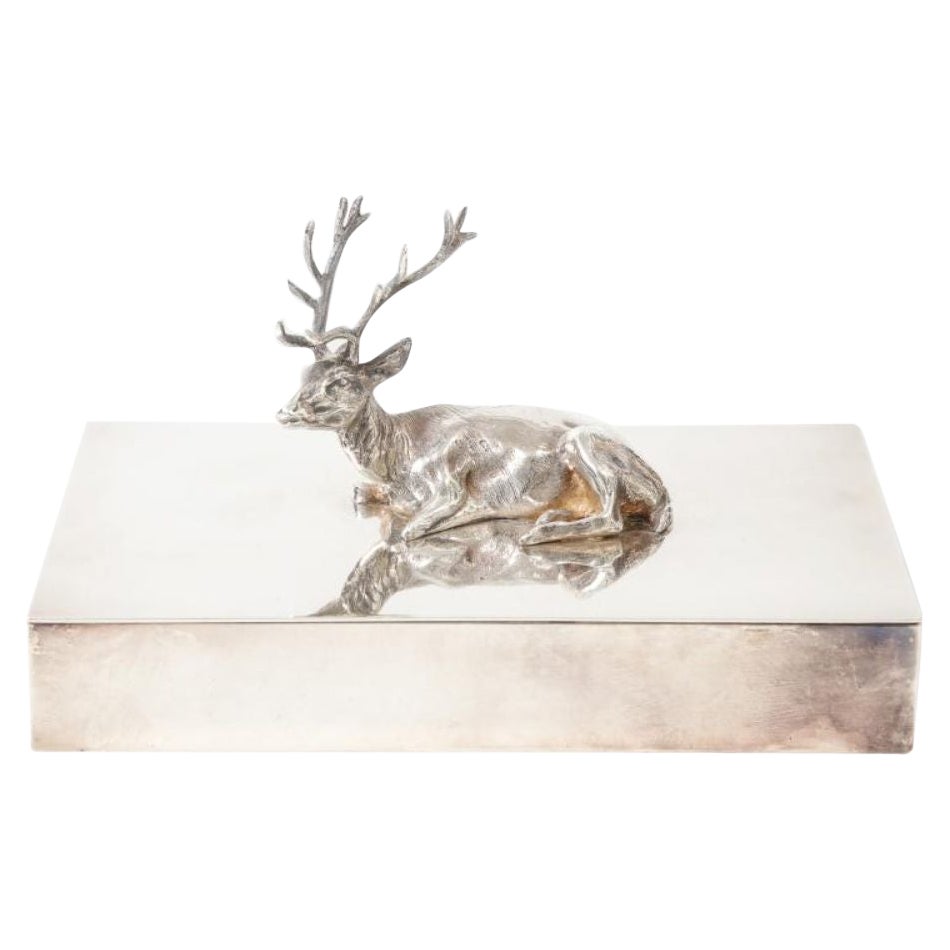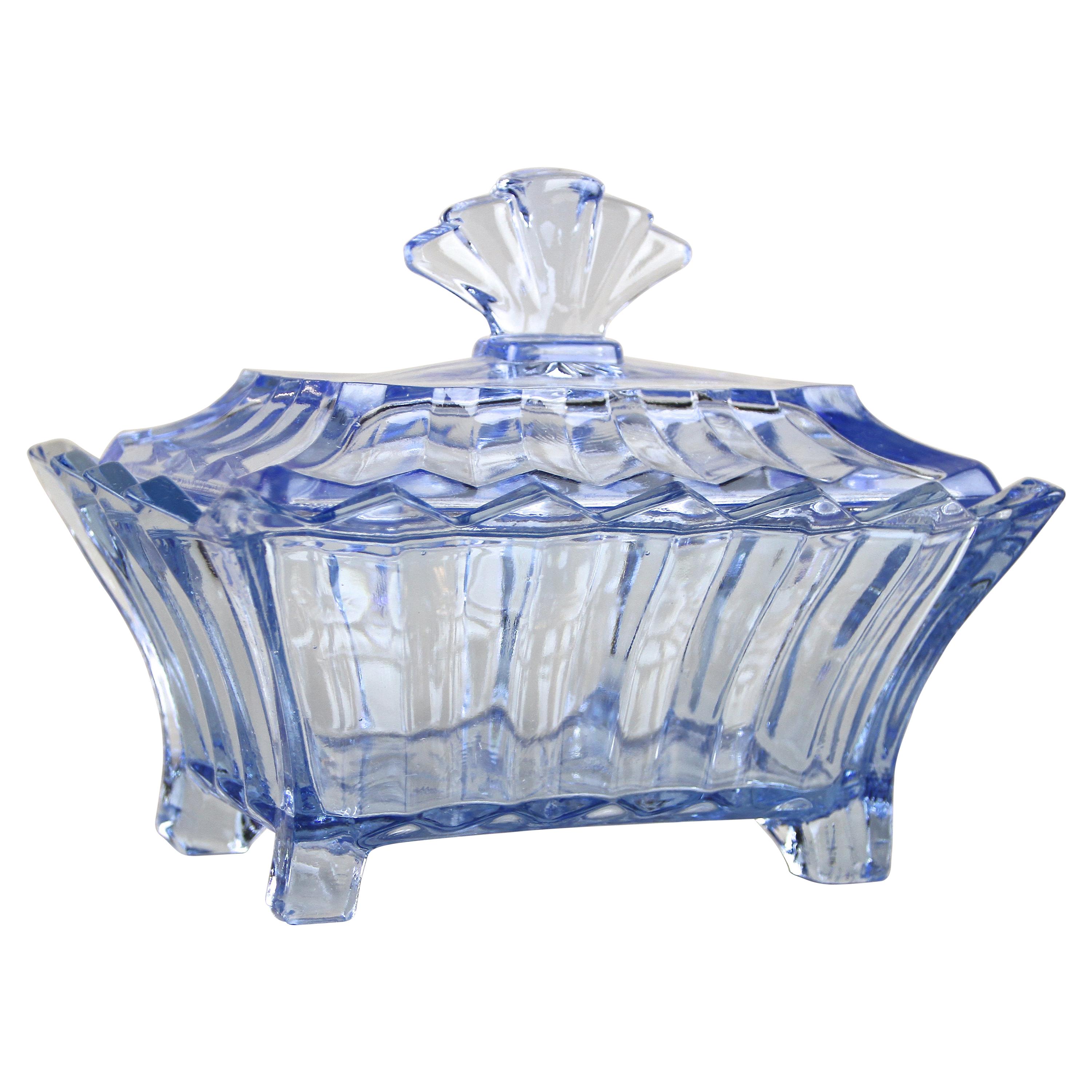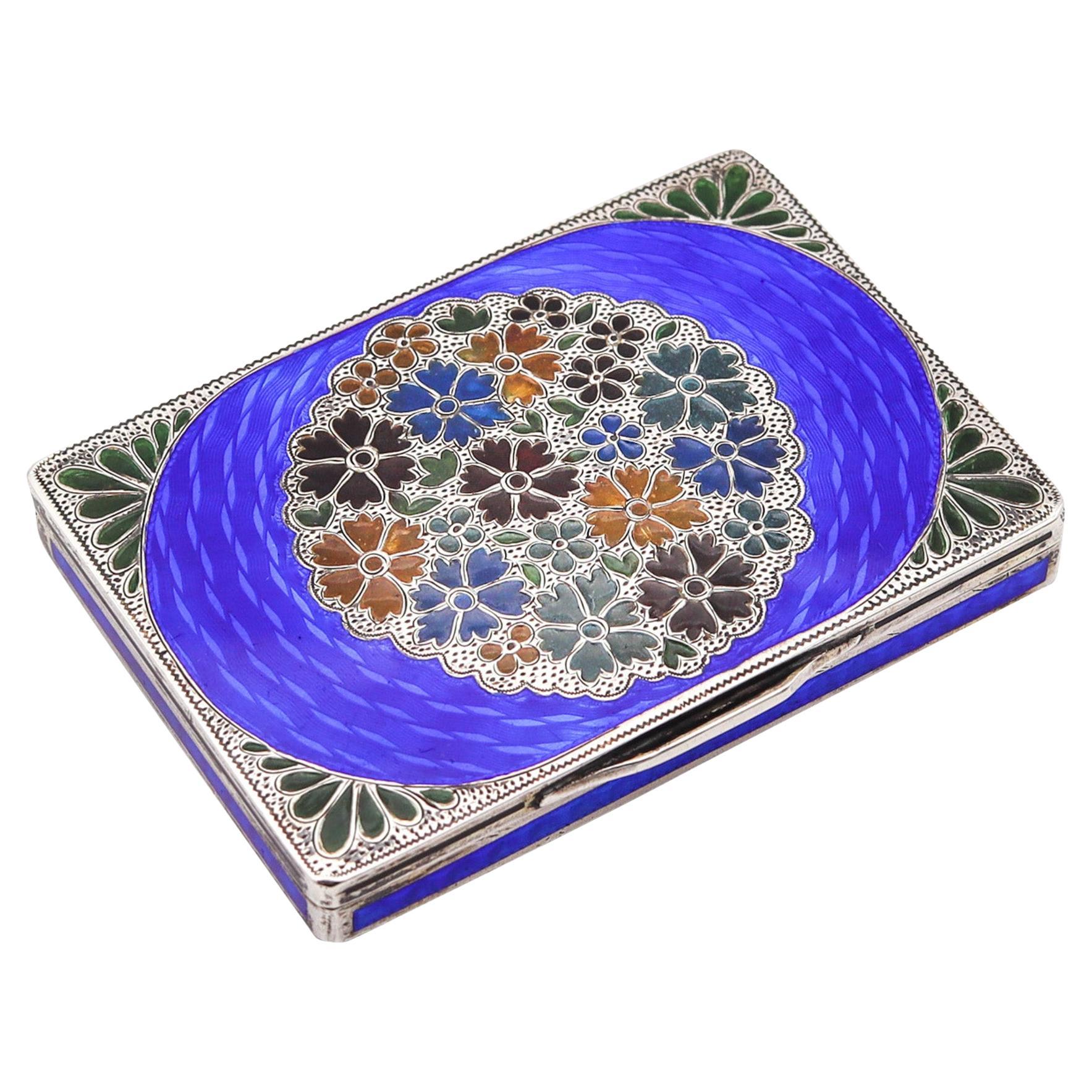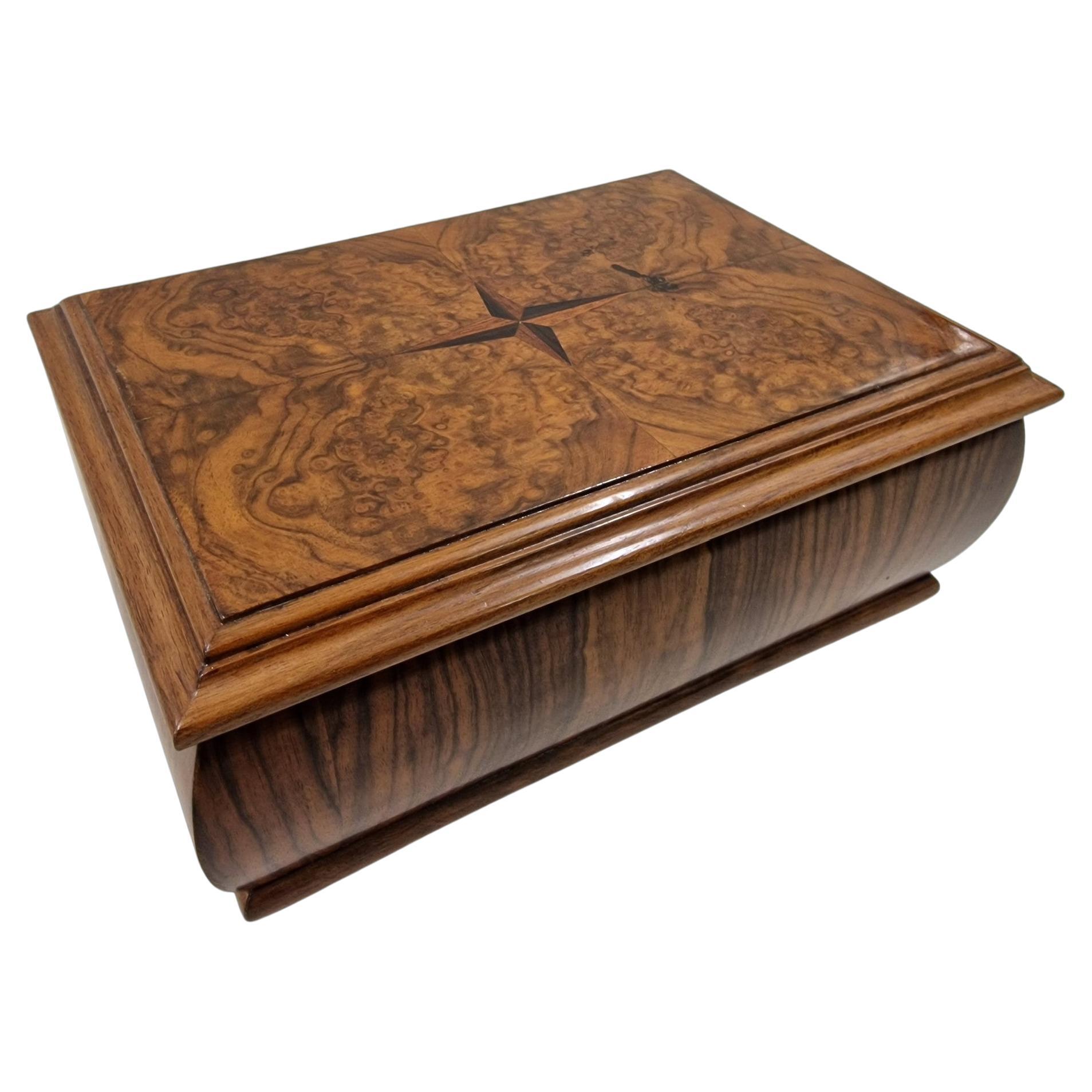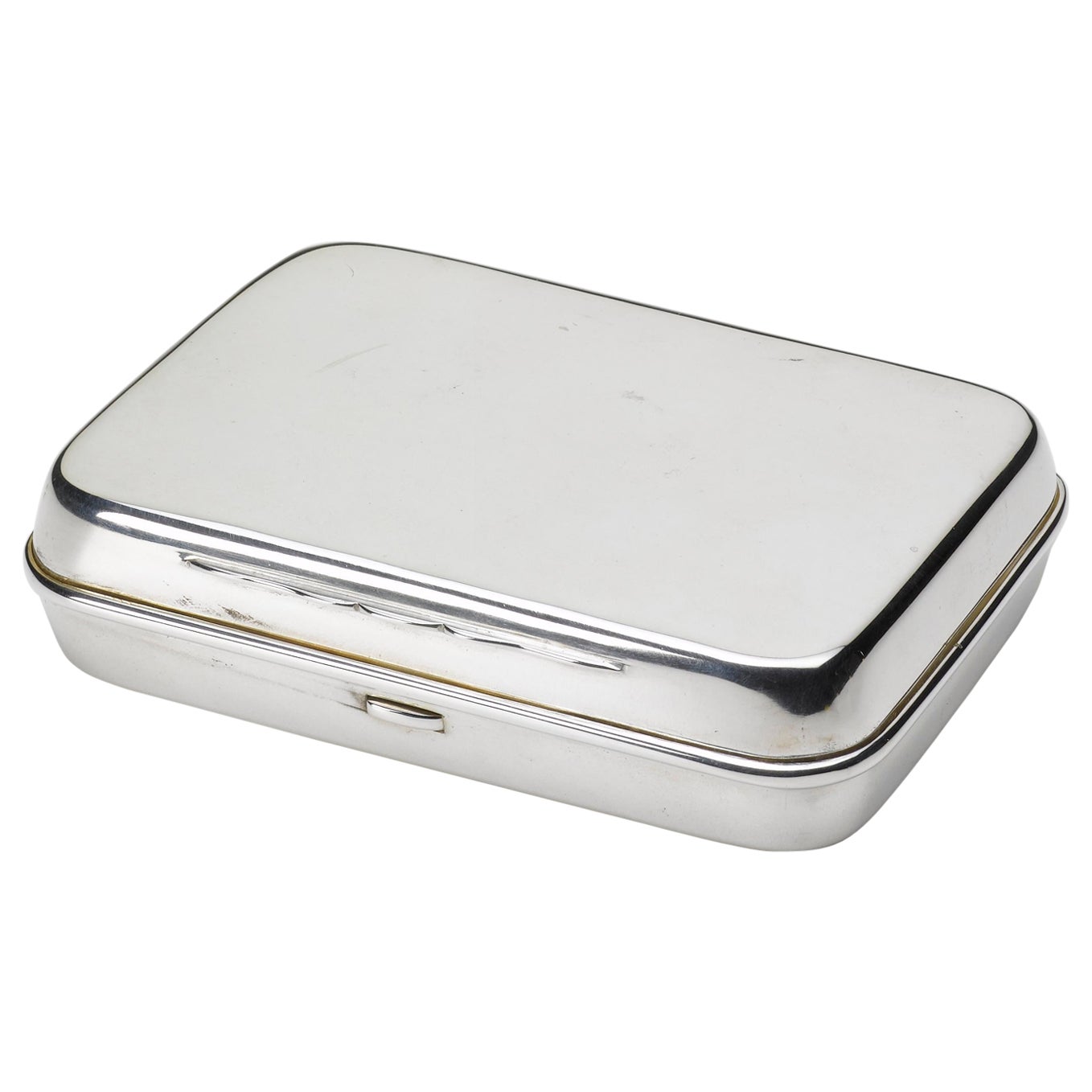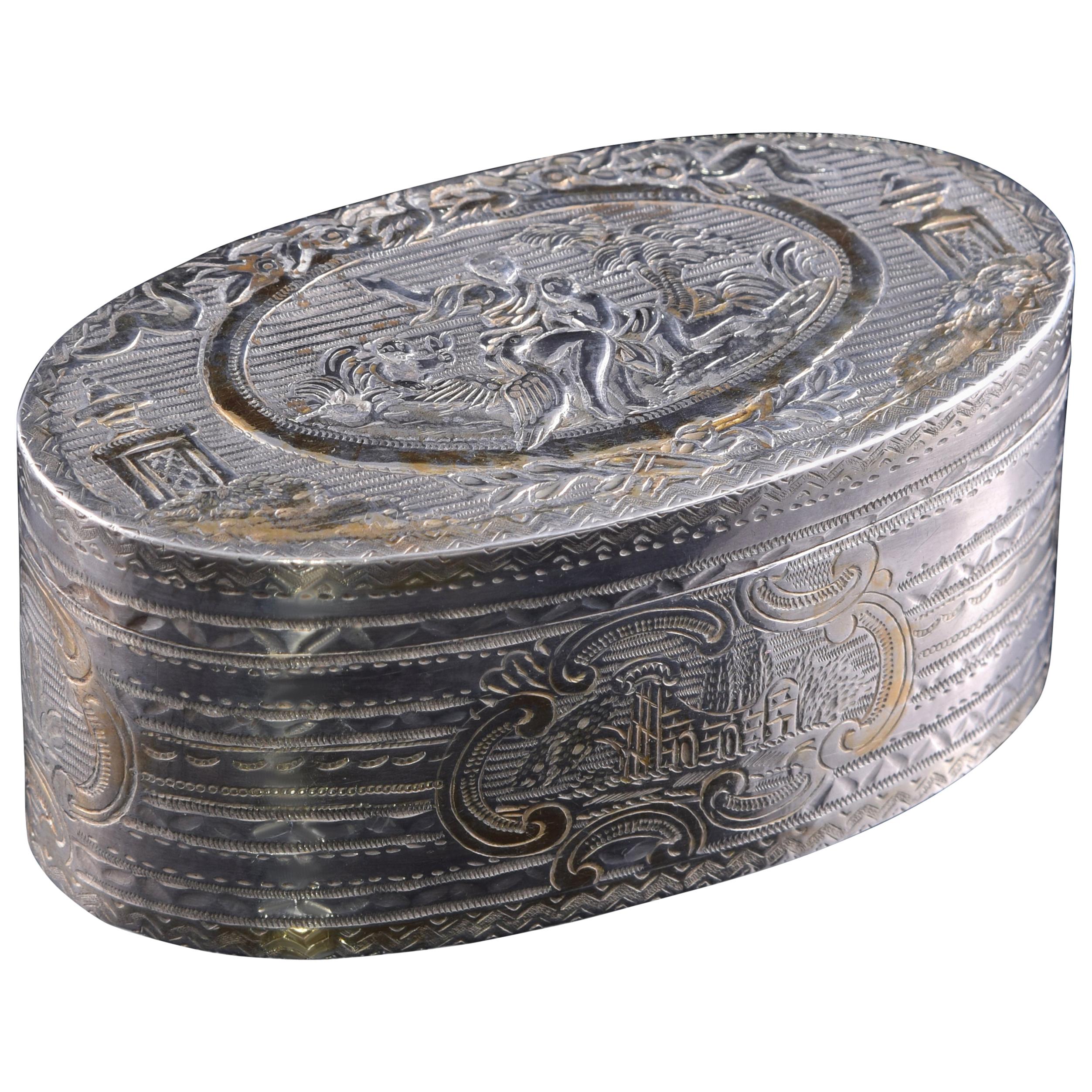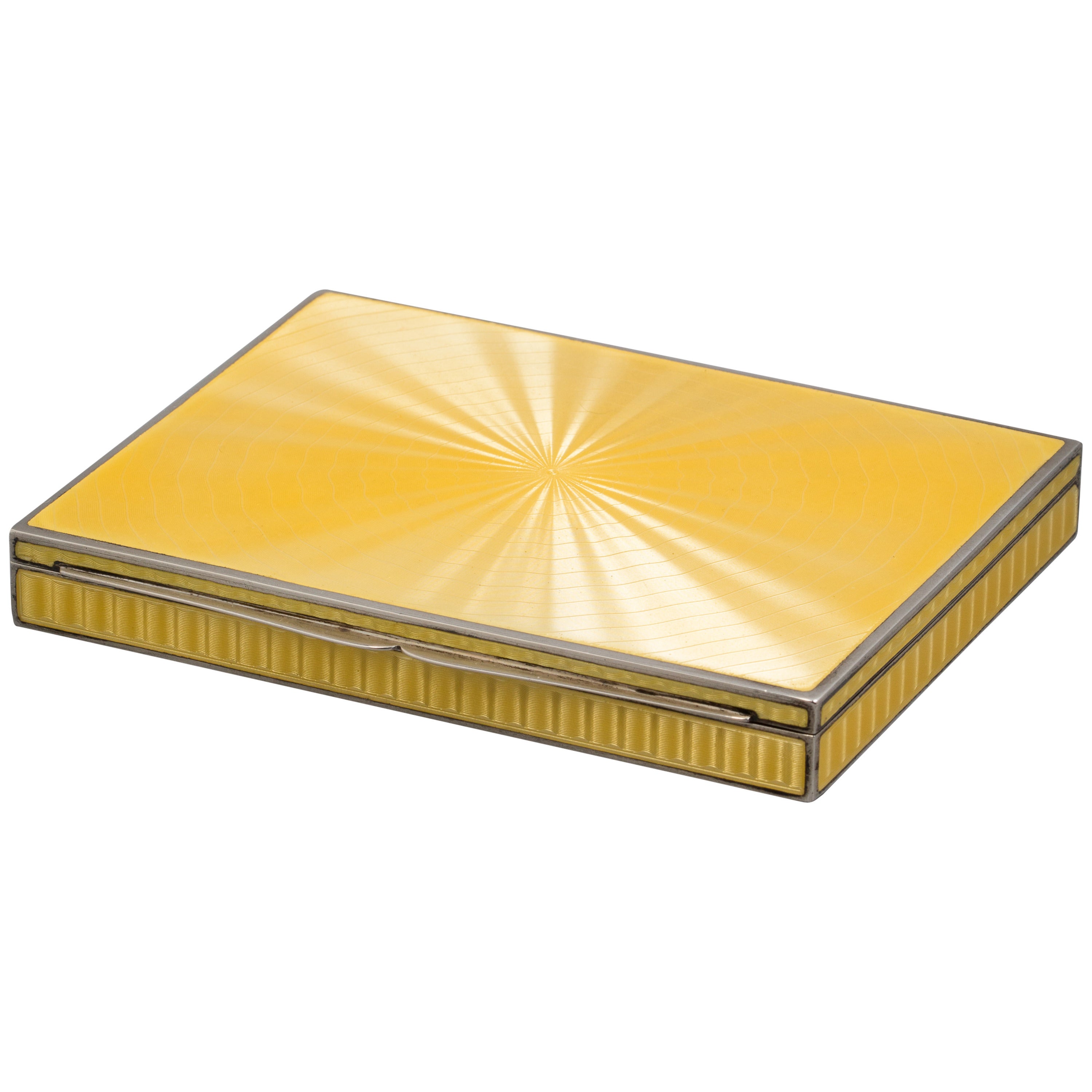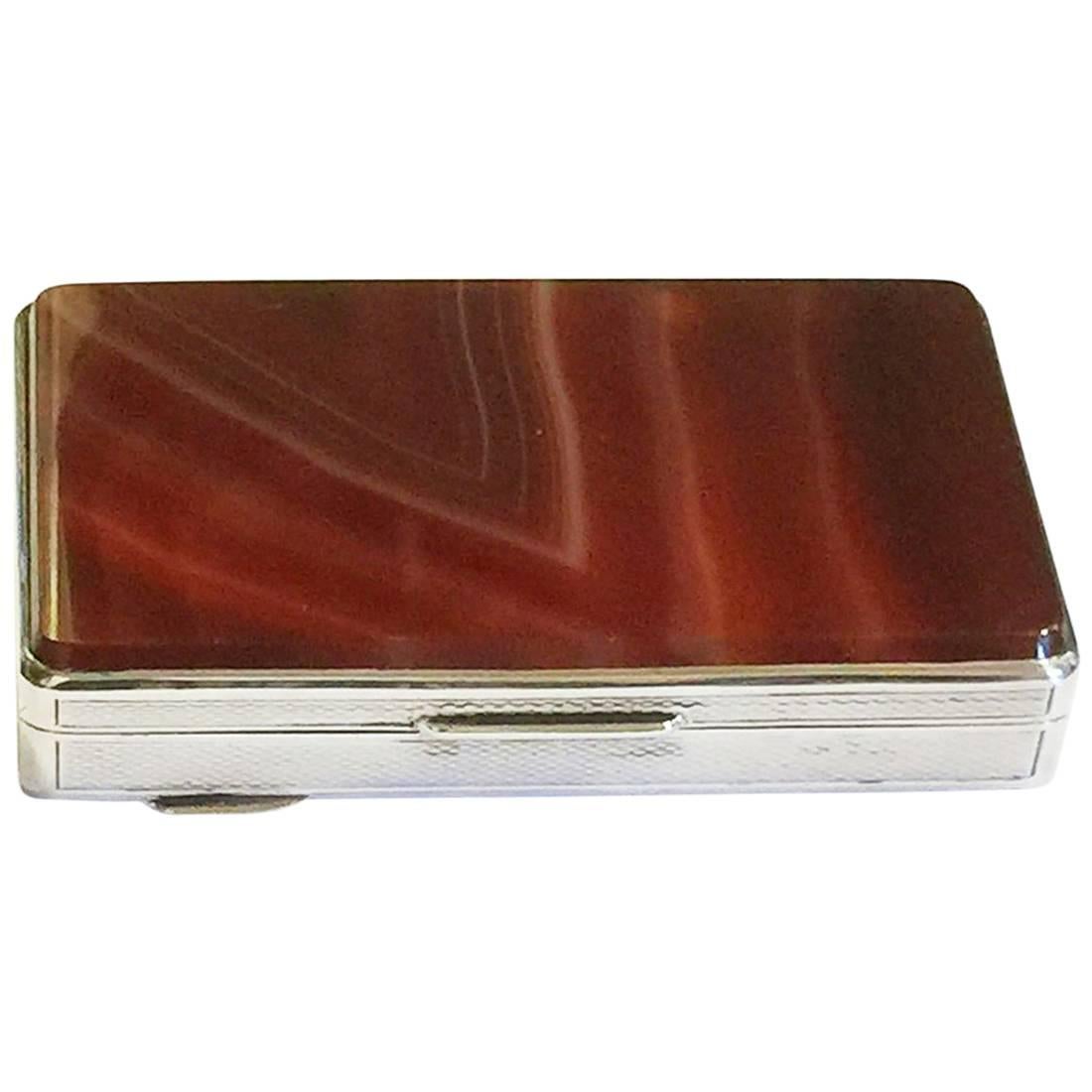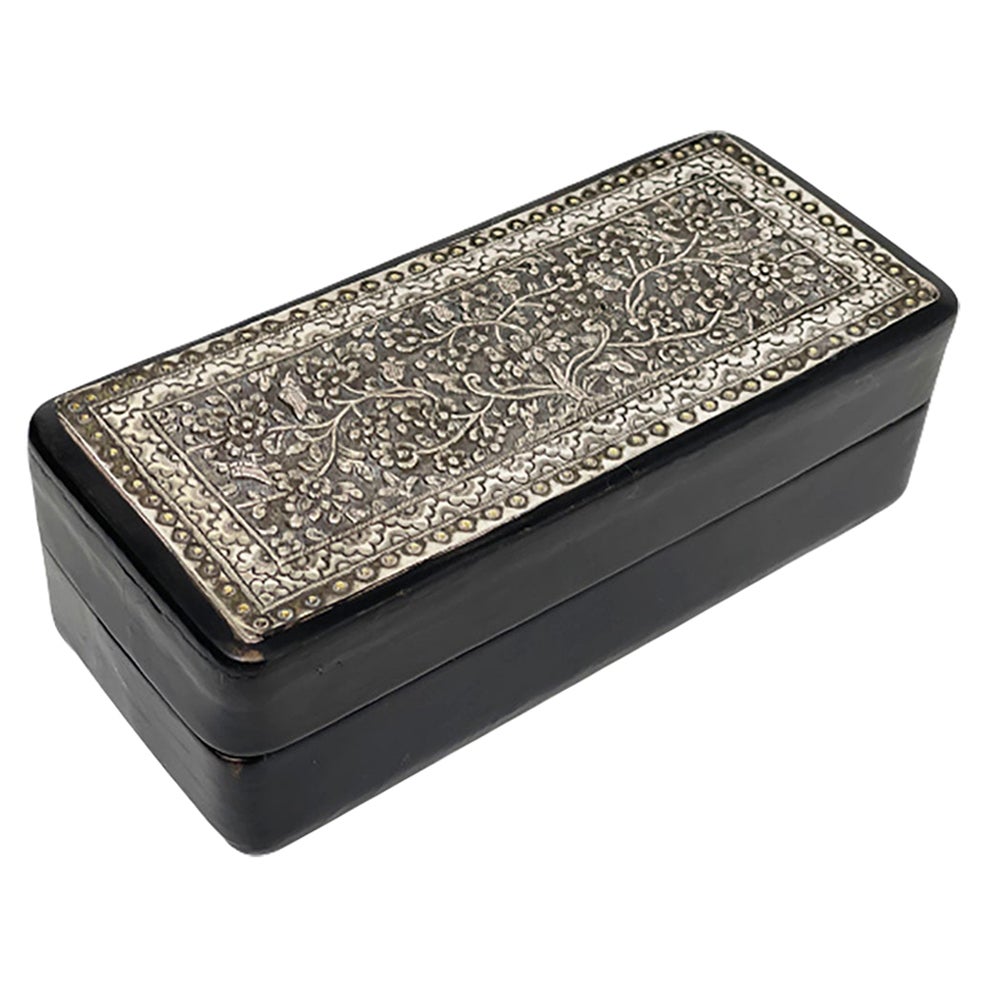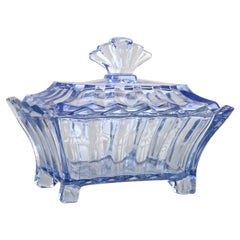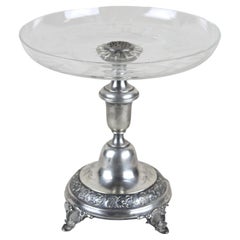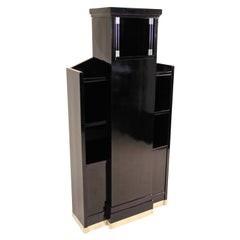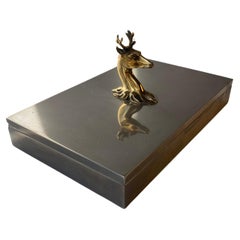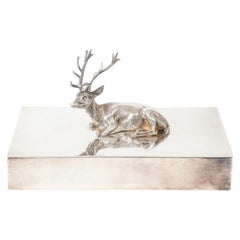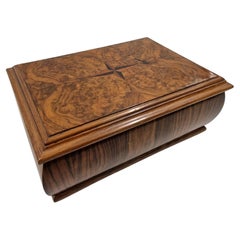
Silver Box with Deer Antler Coverings, 900 Silver Hallmarked, Austria circa 1920
View Similar Items
Want more images or videos?
Request additional images or videos from the seller
1 of 16
Silver Box with Deer Antler Coverings, 900 Silver Hallmarked, Austria circa 1920
About the Item
- Dimensions:Height: 2.4 in (6.1 cm)Width: 10.2 in (25.91 cm)Depth: 7.5 in (19.05 cm)
- Materials and Techniques:
- Place of Origin:
- Period:
- Date of Manufacture:circa 1920
- Condition:Refinished. Wear consistent with age and use.
- Seller Location:Lichtenberg, AT
- Reference Number:Seller: SB-HI11stDibs: LU1553224416802
About the Seller
5.0
Platinum Seller
These expertly vetted sellers are 1stDibs' most experienced sellers and are rated highest by our customers.
Established in 2015
1stDibs seller since 2015
328 sales on 1stDibs
Typical response time: 2 hours
More From This SellerView All
- Art Deco Blue Glass Box with Lid, Austria, circa 1920Located in Lichtenberg, ATExclusive blue Art Deco glass box with Lid from the period in Austria around 1920. This very decorative, lovely blue pressed glass box impresses wit...Category
Mid-20th Century Austrian Art Deco Decorative Bowls
MaterialsGlass
- Silver Centerpiece With Engraved Glass Bowl, Hallmarked - Austria ca. 1895Located in Lichtenberg, ATFantastic Art Nouveau silver centerpiece with glass bowl from the period in Austria around 1895. The artfully shaped base, elaborately made of 276,3 gramm solid silver, shows an outs...Category
Antique Late 19th Century Austrian Art Nouveau Centerpieces
MaterialsSilver
- Art Deco Display Cabinet, Austria, circa 1920Located in Lichtenberg, ATRare design Art Deco display cabinet from the early 20th century in Austria. This architectural cabinet was built circa 1920 and shows the transition from Art Nouveau to the early Ar...Category
Early 20th Century Austrian Art Deco Cabinets
MaterialsFruitwood
- Art Deco Blue Glass Bowl, Austria, circa 1920Located in Lichtenberg, ATHighly decorative blue Art Deco glass bowl from the early 20th century in Austria. This lovely glass bowl from around 1920 shows an unique design, reflecting the famous Art Deco form...Category
Mid-20th Century Austrian Art Deco Decorative Bowls
MaterialsGlass
- Art Deco Blue Glass Vase, Austria, circa 1920Located in Lichtenberg, ATVery decorative 20th century blue glass vase from the early Art Deco period around 1920 in Austria. A fantastic designed piece of glass adorned by a special cut building beautiful pa...Category
Mid-20th Century Austrian Art Deco Vases
MaterialsGlass
- Art Deco Table Macassar Wood, Austria, circa 1920Located in Lichtenberg, ATDreamlike Art Deco table from the early epoch in Austria, circa 1920. The breathtaking shape in combination with finest Macassar wood makes this design table an absolute timeless mas...Category
Early 20th Century Austrian Art Deco Side Tables
MaterialsFruitwood, Macassar
You May Also Like
- Hermes , Rare Box , silvered metal with antler deer head in brass, trinketBy HermèsLocated in Los Angeles, CAAmazing and elegant design in this Hermes , France lined metal silvered box with a deer decoration .This is a very rare , possibly unique design.Category
Vintage 1960s French Modern Jewelry Boxes
MaterialsMetal
- Silver Box with Deer Ornament on Lid, circa 1940Located in New York City, NYSilver Box with Deer Ornament on Lid, France, c. 1940 Elegant silver plated box with a sitting stag adorning the top. Additional Information: Materials: Silver Plated Metal Origin:...Category
20th Century French Modern Decorative Boxes
MaterialsMetal
- Box, casket, walnut, circa 1920, Art Deco, AustriaLocated in Wien, ATVery decorative wooden box with quality star shaped inlay work. This object is an original from the Art Deco period, executed in Austria. The box has a particularly beautiful shape,...Category
Early 20th Century Austrian Art Deco Decorative Boxes
MaterialsWalnut
- Austrian 1925 Art Deco Plique à jour Enameled Box In .900 Sterling SilverLocated in Miami, FLAustria art deco enameled box designed by Johann Scholz. An exceptional snuff-pills box, created in Vienna Austria between the1922-1925. This box ...Category
Vintage 1920s Austrian Art Deco Decorative Boxes
MaterialsSilver, Sterling Silver, Enamel
- Hallmarked Silver Plated Keepsake Box, Sheffield, Uk, Circa 1900Located in Colorado Springs, COOffered is a stunning Sheffield silver keepsake box dating to 1900, with associated hallmark. This small box includes a clean interior and rounded corners. The box is free of names or initials, but would have been used to house keepsakes such as jewelry or cufflinks. A well maintained, elegant piece, this antique silver box is an excellent addition to any silver collection. Trinket or keepsake boxes have taken on many forms since their first conception in ancient times. However their purpose remains the same; to store jewelry and other items precious to the owner. Originally, these boxes were used specifically for jewelry. These were in common use as early as 5000 BC in Ancient Egypt, when the majority of Egyptians, both male and female, wore jewelry. Boxes were used to keep these gemstone encrusted items safe. In Ancient Rome, jewelry was a status symbol. Rings and brooches were utilized to represent ones status in society. Again, boxes were needed for security and storage purposes. Finding early examples of these are quite rare. Victorian and Edwardian examples of trinket boxes are far more common. This is because owning jewellery was a luxury until the Victorian era- let alone possessing so much a box was needed to store it all. Fine jewelry and other items became available to the masses after the industrial revolution due to the reduction in production costs. This led to a demand for trinket boxes, which were much smaller than jewelry boxes and therefore better suited to the needs of the middle class who did not yet possess an abundance of jewelry. In Victorian households, collectables and other items of interested were also stashed inside these boxes. This is why they are known as trinket or keepsake boxes, rather than just jewelry boxes, although of course jewelry was also stored in them. Trinket boxes were produced in large numbers around this time. Many were lined with colored plush or velvet or rich wood. More elaborate designs had interior divisions and trays for rings and other pieces of jewellery. It was also common to see trinket boxes so small that they could only contain one item, such as a single ring. Ornate exteriors were created to reflect the value of the trinket boxes contents. The Edwardian era saw the introduction of new styles of trinket box. These included small circular or oblong boxes...Category
Antique Early 1900s British Art Deco Decorative Boxes
MaterialsSilver
- Hallmarked Silver Plated Keepsake Box, Sheffield, UK, circa 1900Located in Colorado Springs, COOffered is a stunning silver plated keepsake box dating to 1900, with associated hallmark. This small box includes a wooden interior with two slots and a blank square on top where initials could have been engraved. A well maintained, elegant piece, this antique silver box is an excellent addition to any silver or home decor collection. Trinket or keepsake boxes have taken on many forms since their first conception in ancient times. However their purpose remains the same; to store jewelry and other items precious to the owner. Originally, these boxes were used specifically for jewelry. These were in common use as early as 5000 BC in Ancient Egypt, when the majority of Egyptians, both male and female, wore jewelry. Boxes were used to keep these gemstone encrusted items safe. In Ancient Rome, jewelry was a status symbol. Rings and brooches were utilized to represent ones status in society. Again, boxes were needed for security and storage purposes. Finding early examples of these are quite rare. Victorian and Edwardian examples of trinket boxes are far more common. This is because owning jewellery was a luxury until the Victorian era- let alone possessing so much a box was needed to store it all. Fine jewelry and other items became available to the masses after the industrial revolution due to the reduction in production costs. This led to a demand for trinket boxes, which were much smaller than jewelry boxes and therefore better suited to the needs of the middle class who did not yet possess an abundance of jewelry. In Victorian households, collectables and other items of interested were also stashed inside these boxes. This is why they are known as trinket or keepsake boxes, rather than just jewelry boxes, although of course jewelry was also stored in them. Trinket boxes were produced in large numbers around this time. Many were lined with colored plush or velvet or rich wood. More elaborate designs had interior divisions and trays for rings and other pieces of jewellery. It was also common to see trinket boxes so small that they could only contain one item, such as a single ring. Ornate exteriors were created to reflect the value of the trinket boxes contents. The Edwardian era saw the introduction of new styles of trinket box. These included small circular or oblong boxes...Category
Antique Early 1900s English Art Deco Decorative Boxes
MaterialsSilver
$600 Sale Price20% Off
Recently Viewed
View AllMore Ways To Browse
Austrian Antlers
Deer Austria
Austrian Deer
Small Antlers
Austrian Jewellery Box
Stag Antlers
Used Stag Bedroom Furniture
Stag Jewelry
Antler Jewelry
Deer Antler Jewelry
Rectangular Lidded Box
Wooden And Metal Box
Large Antique Decorative Box
Small Decorative Brass Boxes
Small Brass Decorative Box
Brass Container
Victorian Wood Box
Hand Painted Porcelain Boxes

